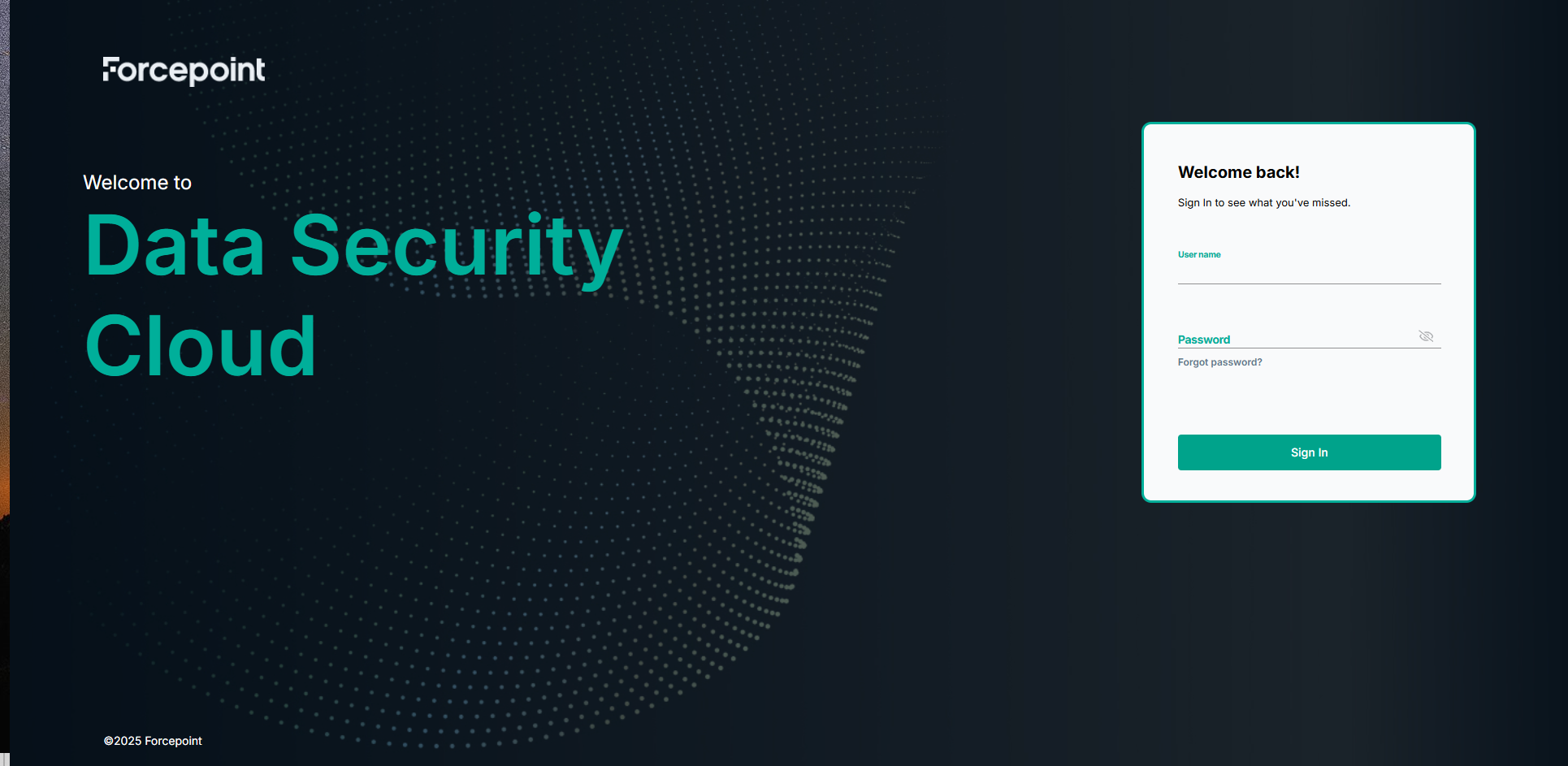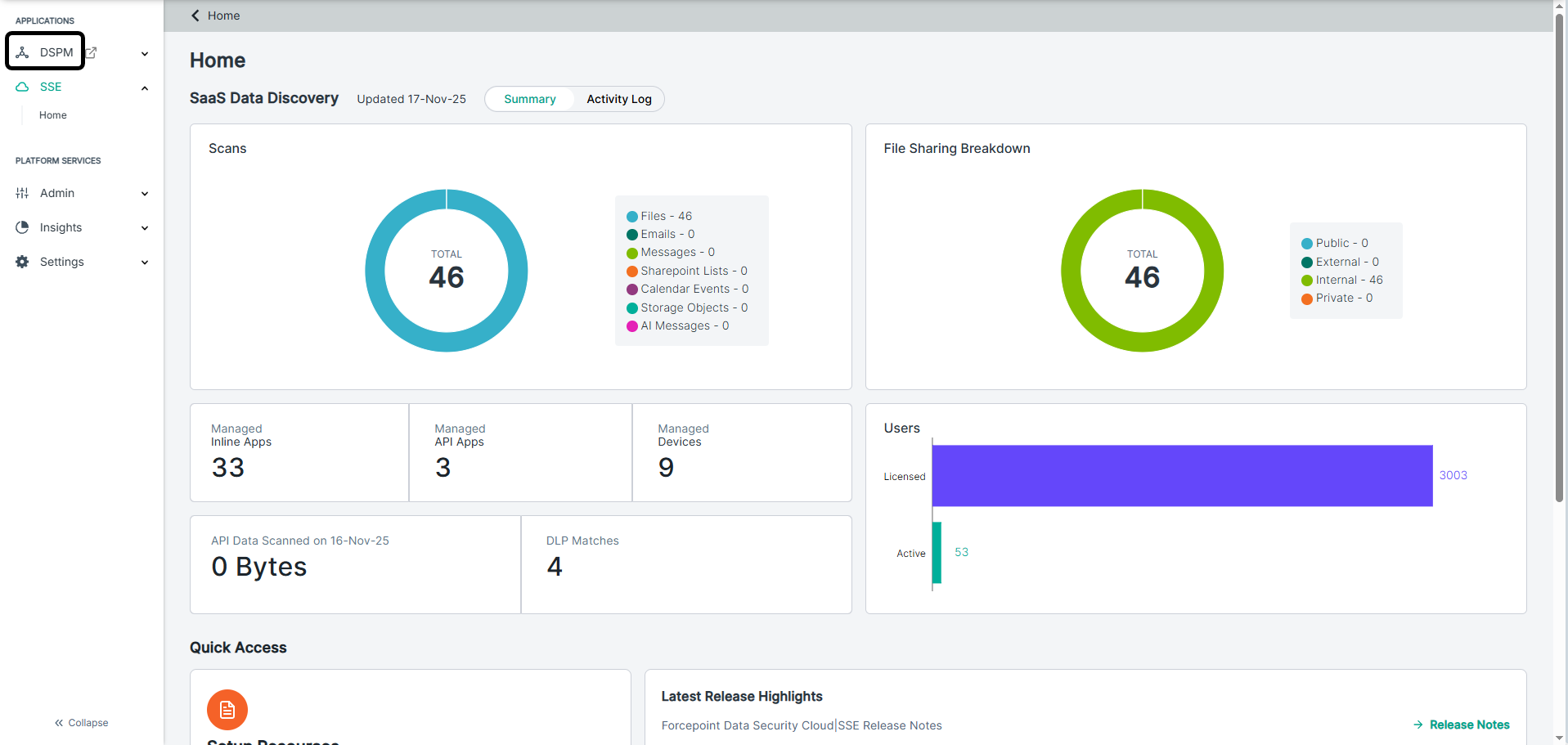User Management
Forcepoint DSPM can be deployed standalone or can be used as a service integrated with Forcepoint Data Security Cloud. When using Forcepoint DSPM as a service under Forcepoint Data Security Cloud, user management is done from the Forcepoint Data Security Cloud console.
Logging into the console and navigating to DSPM
A. If you are an existing Forcepoint Data Security Cloud customer, follow the steps mentioned below:
- Enter your log in credentials for Forcepoint Data Security Cloud console:

- Post log in, click on DSPM on the left navigation:

B. If you are a new Forcepoint Data Security Cloud customer, follow the steps mentioned below:
- Enter your log in credentials for Forcepoint Data Security Cloud console:

- Post log in, you will be directly taken to the DSPM pages. To navigate to the user management section on the Forcepoint Data Security Cloud, click the user icon, and click
Users.

For user management related operations, refer to following sections in the documentation:
Creation of new user accounts
Once logged into the Forcepoint Data Security Cloud console, administrators can create new users and assign roles that will grant access to the DSPM Console. For details, see Creating a new user.
Modifying user accounts
User accounts previously created in Forcepoint Data Security Cloud and those that were granted roles to access the DSPM console can be modified from the Forcepoint Data Security Cloud. For details, see Editing user details.
User Deactivation
When an administrator deactivates a user account from the Forcepoint Data Security Cloud or removes a DSPM entitlement, the user will automatically lose access to DSPM. The change takes effect immediately upon the next authentication attempt. For details, see Disabling and enabling a user or for removing a single user account, see Deleting a user or for removing users in bulk, see Deleting users in bulk.
Logging out from an active DSPM session
When a user logs out of the Forcepoint Data Security Cloud, the Forcepoint DSPM session they were logged in will be automatically terminated, thereby ensuring consistent log out behavior across both services.